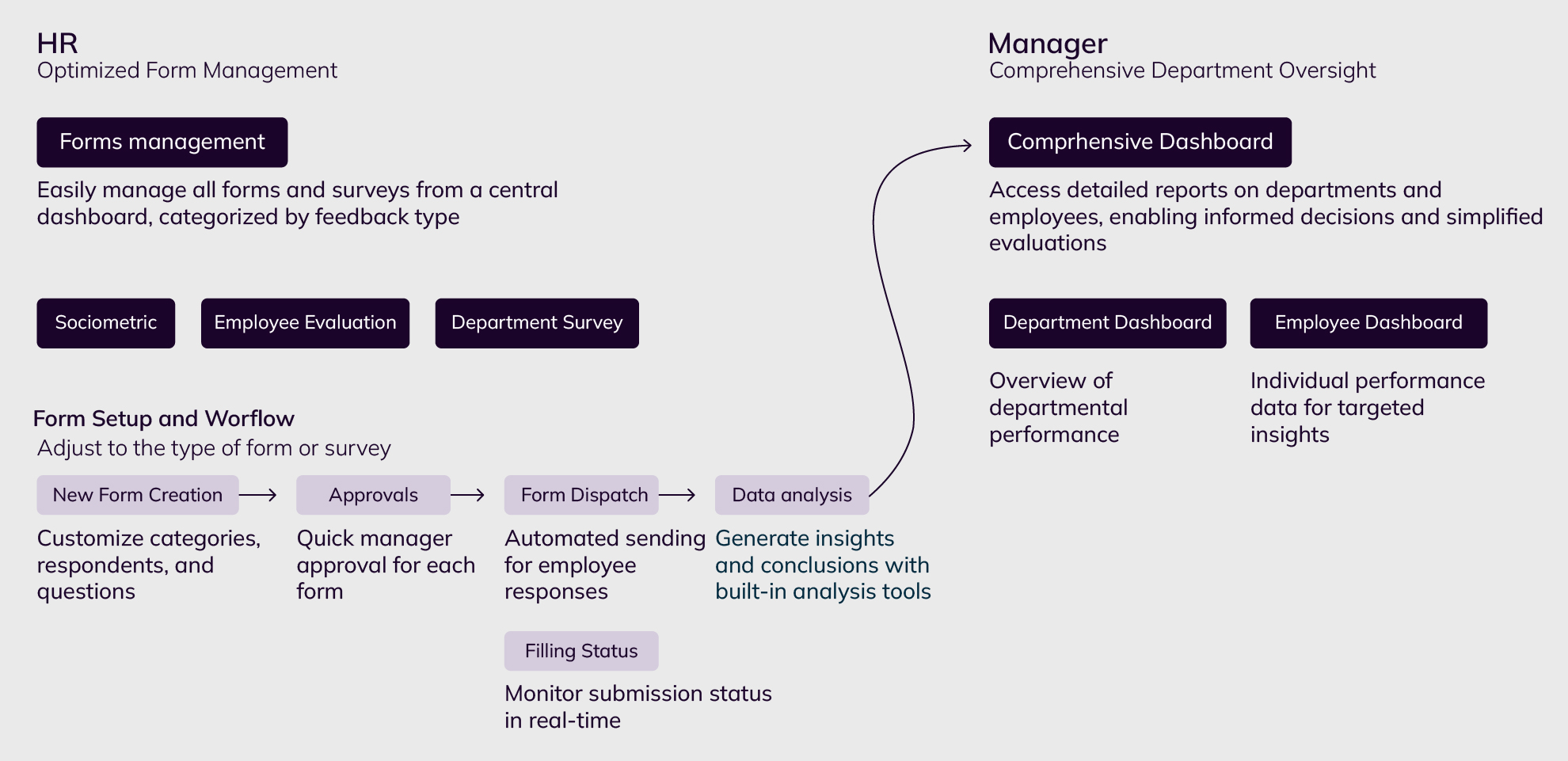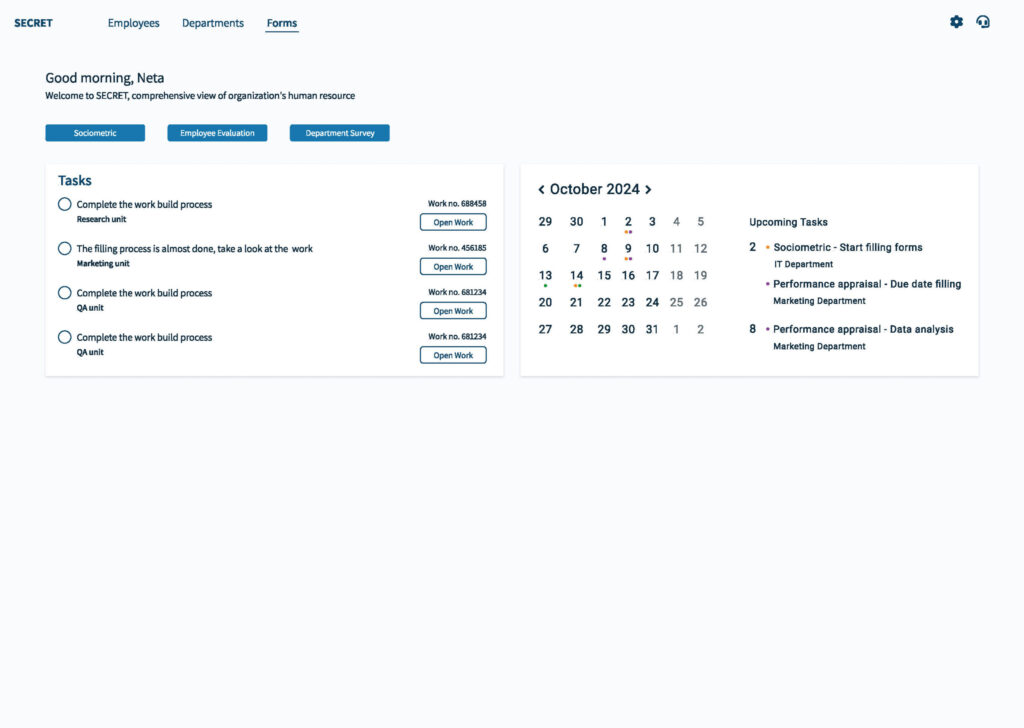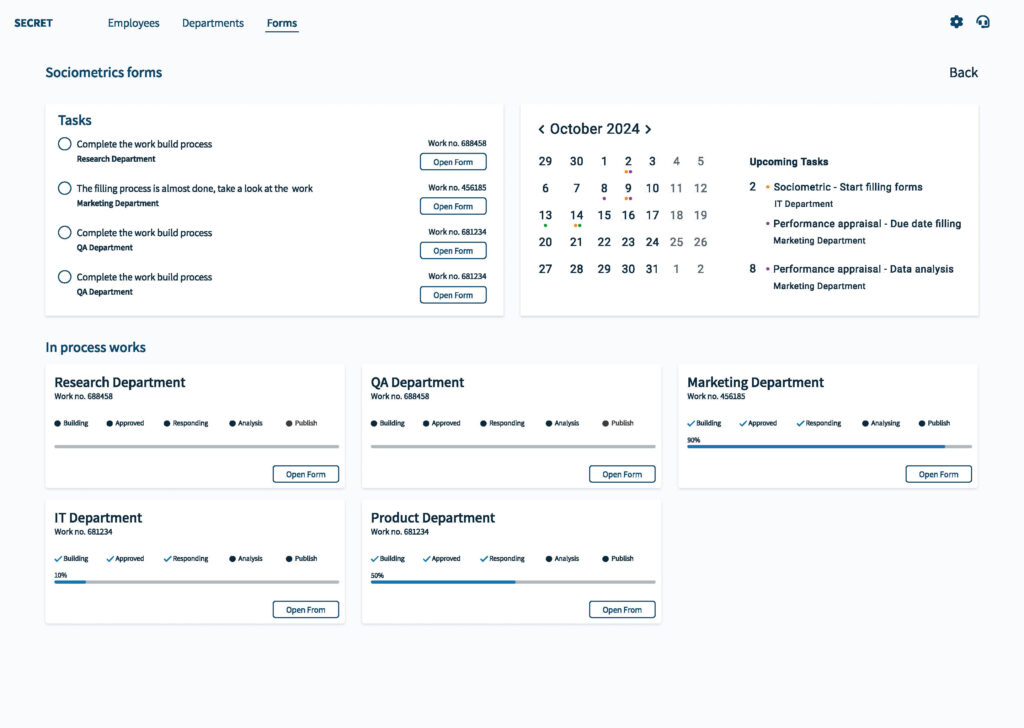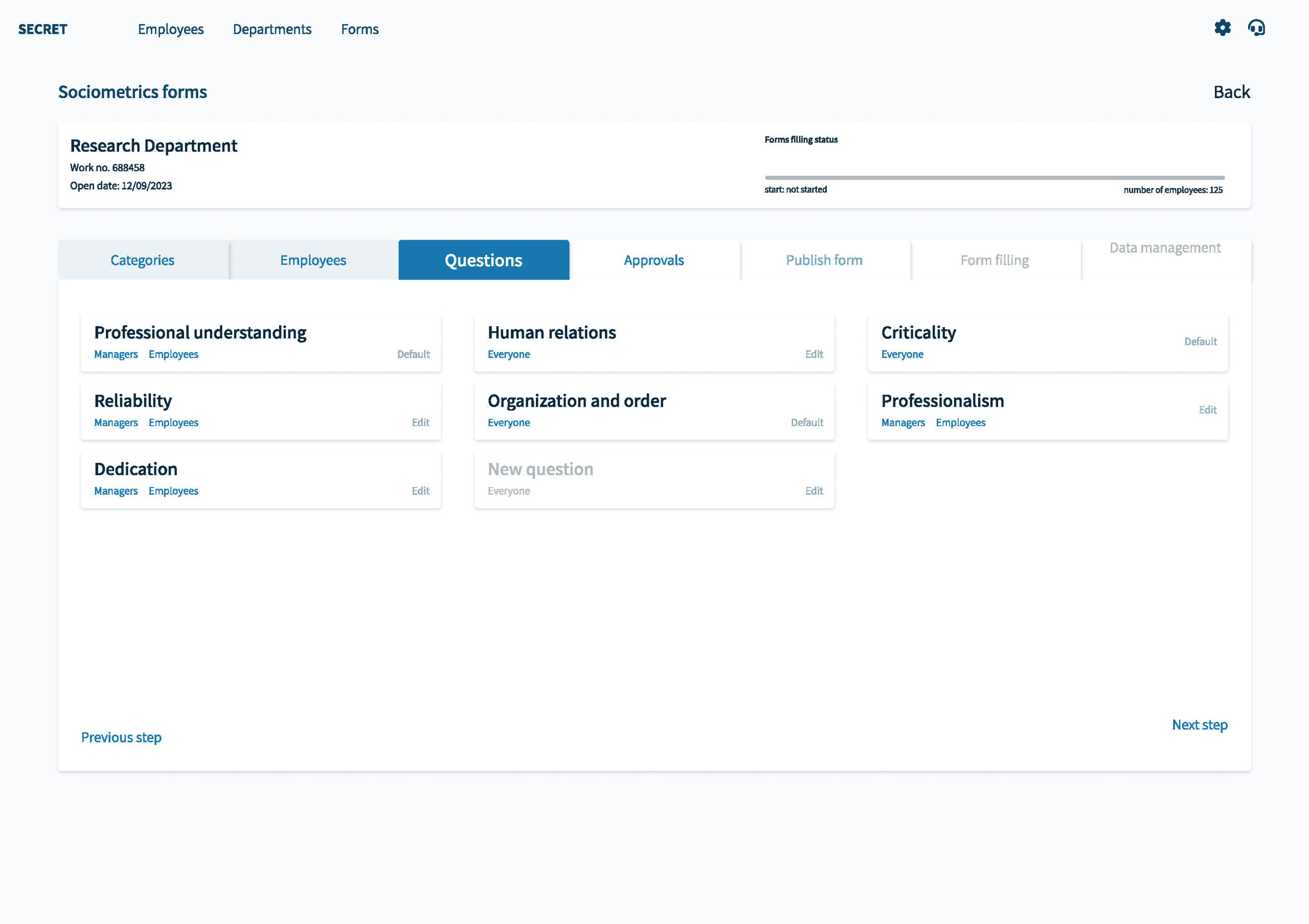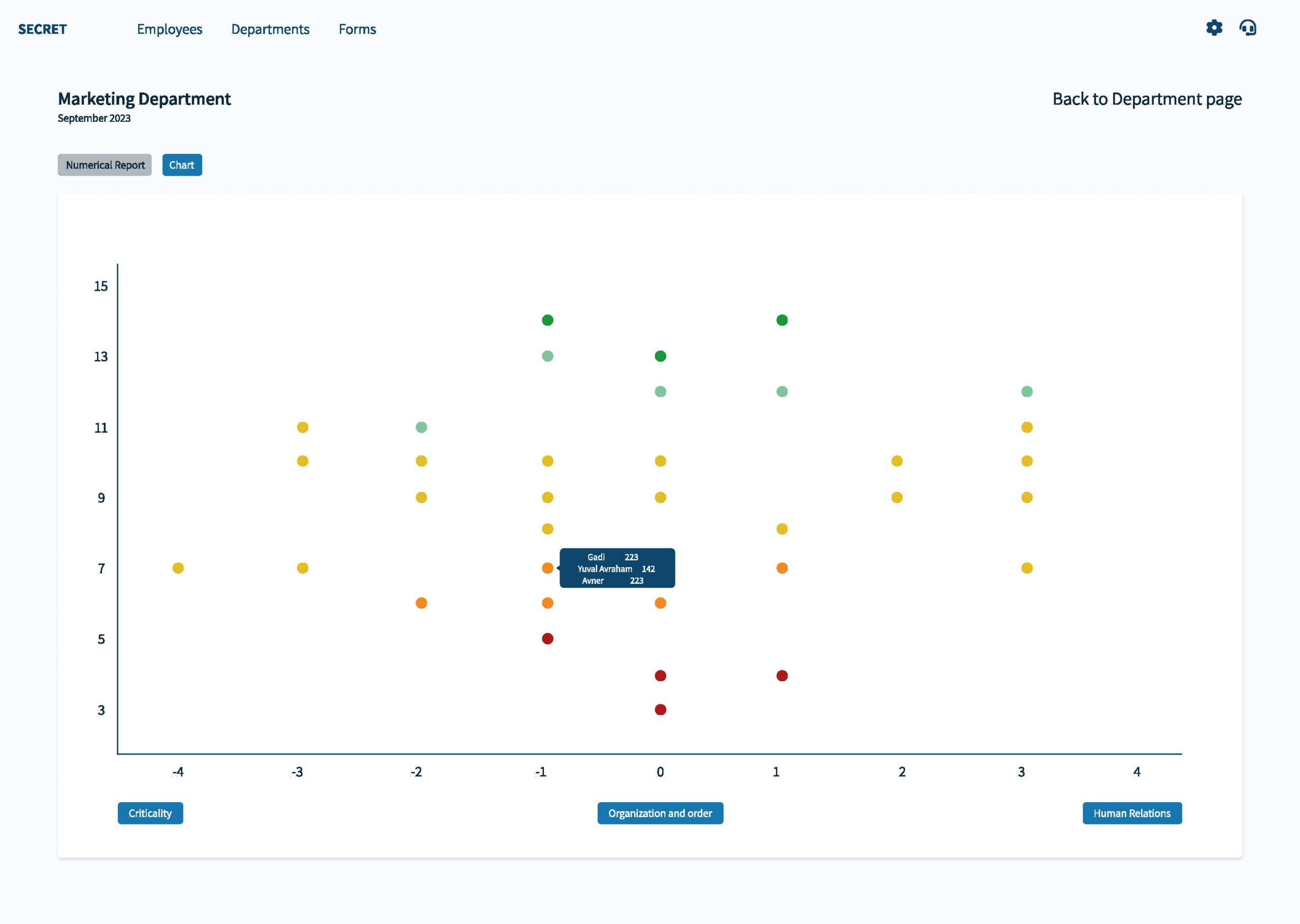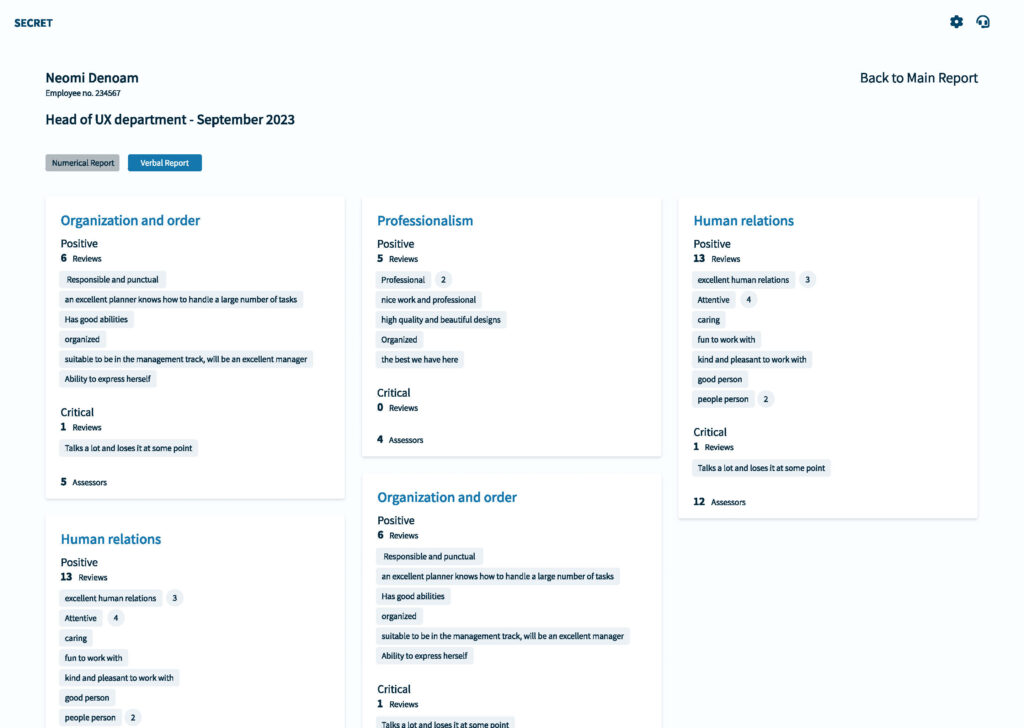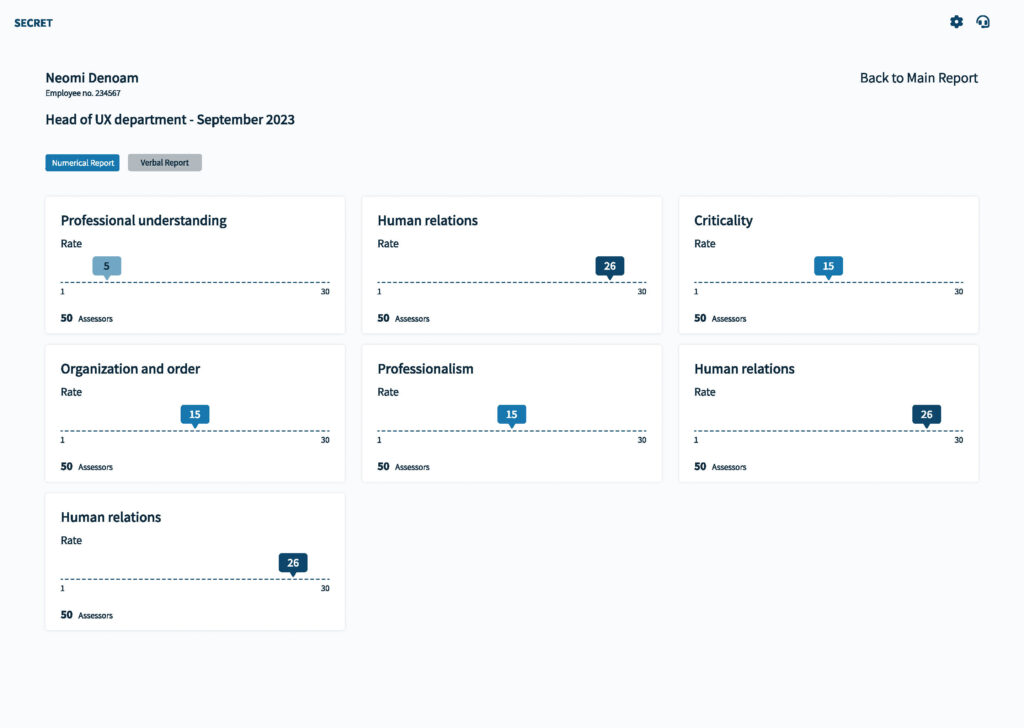An application for guiding and supporting woman on their lifestyle journey at the "Laptin for Life" program.A comprehensive system designed for managing an organization's human resources (HR), sociometric feedback, and surveys
My Role
- Lead designer
- Research
- Concept & Strategy
- Road Map
- Wire-frame
The Challenge
Despite being in 2019, we were still using thousands of printed sociometric forms across various units for personnel feedback and evaluation.
Collecting data about departments or soldiers required navigating several disconnected systems, making it inefficient and cumbersome to get a comprehensive view.
From
Manual Data Entry
to
Strategic Discussions
Today, with the system fully in use across the IAF, Organization HR no longer need to manually enter and edit raw data.
Instead, the system provides analyzed data and insights, frees up work time for drawing conclusions, conducting deeper behavioral analyses, and discussing trends across units - among both employees and commanders.
This marks a significant leap forward, as the focus has shifted from managing the system to improving processes and promoting personnel.
Our Users
Organization HR - Manager of several sociometric feedback and surveys at the same time, helps managers improve their department human capital.
Manager (Commander) - Manager of 6-300 employees, responsible for professionalism, training, motivation and employee well-being.
Pain Points to Goals
Scattered Feedback
Feedback and surveys were handled by multiple officials, leading to fragmented data across various sources, which had to be manually collected.
Dashboard
Design a dashboard to identify trends, strengths, and weaknesses at both department and individual levels, using data from all completed surveys and feedback forms.
Outdated Software
The current system displayed one form at a time, making it difficult to get a clear overview of a department or individual.
Modular System
Develop a modular application that consolidates all personnel surveys and feedback forms, offering a comprehensive view of both department and individual performance.
Manual Workload
The current system required HR to print, distribute, and manually enter data, significantly increasing administrative tasks and reducing efficiency.
Efficient Workflow
Streamline the process for HR, shifting focus to human capital development by automating processes, speeding up information transfer, and improving task efficiency.
Home Screen (HR)
The HR dashboard was designed to simplify task management.
HR representatives could quickly see the status of all forms in progress and filter by form type (Sociometric, Employee Evaluation, or Department Survey).
Additionally, they could easily access information about the departments and employees they were responsible for, making data more accessible and actionable.
Form setup process
Following thorough research into all types of forms to be managed by the system - we designed the process of creating a sociometric form as a generic, flexible workflow.
This approach allows the same structure to be easily adapted for building any other type of form in the future.
The setup process was organized into clear, step-by-step phases, ensuring that key information was always visible and easily adjustable.
To simplify the HR representatives' workload, we consolidated all departments, employees, and forms into just a few main pages for easier navigation and oversight.
"POZA" Chart (Manager Display)
The "POZA" chart visualized three numerical data points from employee evaluations, combining them into a single position on the chart.
The use of color coding (red, orange, yellow, green) represented the distribution of scores, making it easy to identify performance trends and areas for improvement at a glance.
Employee Performance Review
One of the key design challenges was presenting employee feedback in a way that allowed individuals to understand their performance in relation to their peers without violating privacy.
We designed the feedback presentation to be clear, comparative, and yet respectful of colleagues' confidentiality.
Outcome
Over the course of three years, we designed and development a new application for the IAF that dramatically reduced paper usage, streamlined workflows for sociologists, and empowered commanders with a clearer, more efficient way to assess unit performance and make informed decisions.
This case study highlights the importance of flexibility, user-centered design, and designing systems that promote efficiency while keeping users' needs at the forefront.
